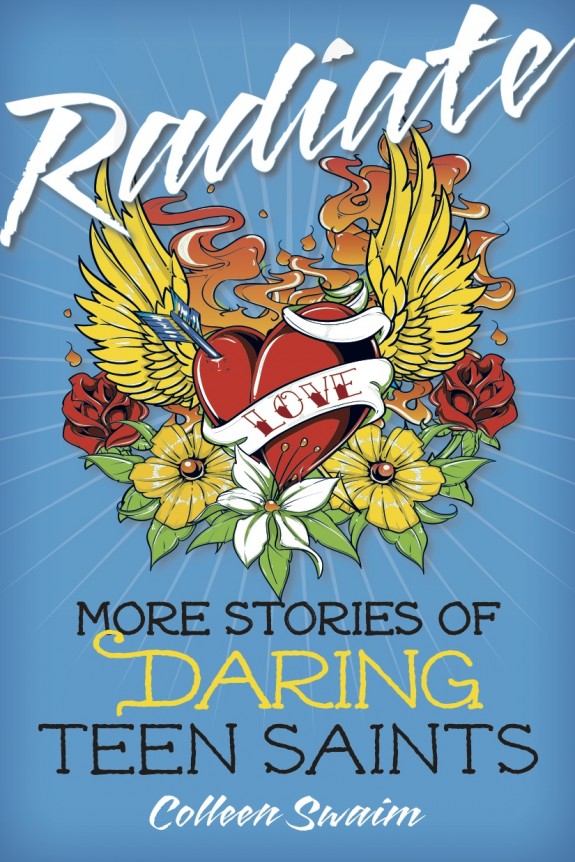One perk of reviewing books is that publishers constantly keep me in the loop. I get emails, newsletters, and catalogs promoting their newest titles. And there’s a constant flow of advanced review copies. (The UPS man is an honorary member of our family.)
With my schedule, I can’t write about every book that crosses my desk. But in the interest of highlighting the best and brightest, here are eight I’m really looking forward to reading.
(Descriptions from publisher.)
Politicizing the Bible: The Roots of Historical Criticism and the Secularization of Scripture
by Dr. Scott Hahn and Dr. Benjamin Wiker
Crossroad, 457 pages, hardcover
Released on September 1, 2012
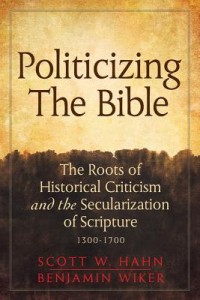 Resisting the typical, dry methods of contemporary scholarship, this powerful examination revisits the biblical days of life-and-death conflict, struggles for power between popes and kings, and secret alliances of intellectuals united by a desire to pit worldly goals against the spiritual priorities of the church. This account looks beyond the pretense of neutrality and objectivity often found in secular study, and brings to light the appropriation of scripture by politically motivated interpreters.
Resisting the typical, dry methods of contemporary scholarship, this powerful examination revisits the biblical days of life-and-death conflict, struggles for power between popes and kings, and secret alliances of intellectuals united by a desire to pit worldly goals against the spiritual priorities of the church. This account looks beyond the pretense of neutrality and objectivity often found in secular study, and brings to light the appropriation of scripture by politically motivated interpreters.
Questioning the techniques taken for granted at divinity schools worldwide, their origins are traced to the writings of Machiavelli and Marsilio of Padua, the political projects of Henry VIII, Thomas Hobbes, and John Locke, and the quest for an empire of science on the part of Descartes and Spinoza. Intellectual and inspiring, an argument is made for bringing Christianity back to biblical literacy.
“Dr. Scott Hahn has a way, which is both readable and scholarly, of inspiring his readers to discover the great treasure of Scripture . . . . With the touch of a master’s pen, he explains some very important and yet complex concepts concerning the reliability, efficacy, meaning, and importance of Sacred Scripture for Catholics.”
— Cardinal Donald W. Wuerl, Archbishop of Washington
St Kateri: Lily of the Mohawks
by Matthew and Margaret Bunson
Our Sunday Visitor, 244 pages, paperback
Released on September 5, 2012
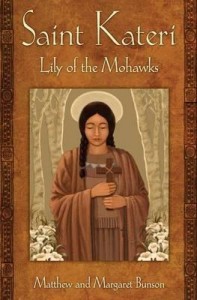 This authoritative account of the first Native American woman to be declared a saint by the Church is sure to inspire you. Discover an extraordinary young woman who was called by Pope Blessed John Paul II, God’s “bountiful gift” to His Church and a “sweet, frail yet strong figure of a young woman who died when she was only twenty-four years old: Kateri Tekakwitha, the ‘Lily of the Mohawks.'”
This authoritative account of the first Native American woman to be declared a saint by the Church is sure to inspire you. Discover an extraordinary young woman who was called by Pope Blessed John Paul II, God’s “bountiful gift” to His Church and a “sweet, frail yet strong figure of a young woman who died when she was only twenty-four years old: Kateri Tekakwitha, the ‘Lily of the Mohawks.'”
The daughter of a Mohawk chief and a Roman Catholic mother, Kateri (baptized Catherine) Tekakwitha (1656-1680) forms a unique bridge between the Native American community and the Church. Kateri was beatified by Pope John Paul II in 1980 and canonized in 2012 by Pope Benedict XVI.
Kateri Tekakwitha’s faith and love for Christ in the face of overwhelming hostility and her own debilitating illnesses will encourage you as you seek God’s grace to overcome challenges in your own life! She is a powerful role model for converts to the Church, young people striving for chastity, and anyone looking to deepen their own prayer life. She is also a shining example that God’s call to holiness is truly universal and is heard by men and women in all walks of life and all ages.
Will Many Be Saved?: What Vatican II Actually Teaches and Its Implications for the New Evangelization
by Ralph Martin
Eerdmans, 336 pages, paperback
Released on September 7, 2012
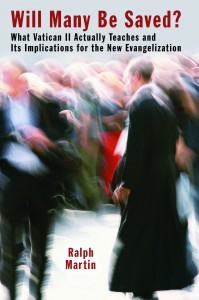 The question of whether and how people who have not had the chance to hear the gospel can be saved goes back to the beginnings of Christian reflection. It has also become a much-debated topic in current theology. In Will Many Be Saved? Ralph Martin focuses primarily on the history of debate and the development of responses to this question within the Roman Catholic Church, but much of Martin’s discussion is also relevant to the wider debate happening in many churches around the world.
The question of whether and how people who have not had the chance to hear the gospel can be saved goes back to the beginnings of Christian reflection. It has also become a much-debated topic in current theology. In Will Many Be Saved? Ralph Martin focuses primarily on the history of debate and the development of responses to this question within the Roman Catholic Church, but much of Martin’s discussion is also relevant to the wider debate happening in many churches around the world.
In particular, Martin analyzes the Dogmatic Constitution on the Church, the document from the Second Vatican Council that directly relates to this question. Contrary to popular opinion, Martin argues that according to this text, the conditions under which people who have not heard the gospel can be saved are very often, in fact, not fulfilled, with strong implications for evangelization.
“For many years we have all appreciated Dr. Martin’s considerable contributions to the mission of the Church. Now he gives us a profound doctrinal foundation for understanding and implementing the ‘new evangelization.’ This is a shot in the arm for bishops, priests, and laity as we respond to the Holy Father’s call.”
— Cardinal Timothy Dolan, Archbishop of New York
Socrates’ Children series
by Peter Kreeft
St. Augustines Press, four volumes, paperback
Released on September 15, 2012
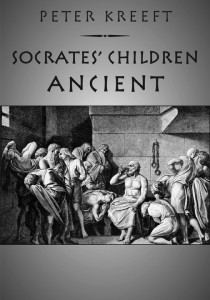 How is this history of philosophy different from all others?
How is this history of philosophy different from all others?
1. It’s neither very long (like Copleston’s twelve-volume tome, which is a clear and helpful reference work but pretty dull reading) nor very short (like many skimpy one-volume summaries) but just long enough.
2. It’s available in separate volumes but eventually in one complete work (after the four volumes – Ancient, Medieval, Modern, Contemporary – are produced in paperbound editions, a one-volume clothbound will be published).
3. It focuses on the “big ideas” that have influenced present people and present times.
4. It includes relevant biographical data, proportionate to its importance for each thinker.
5. It is not just history but philosophy. Its aim is not merely to record facts (of life or opinion) but to stimulate philosophizing, controversy, argument.
6. It does this by aiming above all at understanding, at what the old logic called the “first act of the mind” rather than the third: the thing computers and many “analytic philosophers” cannot understand.
7. It uses ordinary language and logic, not professional academic jargon or symbolic logic.
8. It is commonsensical (and therefore is sympathetic to commonsense philosophers like Aristotle).
9. It is “existential” in that it sees philosophy as something to be lived, and tested in life. It concentrates on the questions that make a difference to your life.
10. It dares to be human and, therefore, occasionally funny or ironic.
11. Like the “Great Books,” it assumes that philosophy is not about philosophy but about reality; about wisdom; about life and death and good and evil and man and God and “stuff like that,” rather than mere analysis of language. It cooks edible meats rather than just sweeping the floor of garbage.
12. It tries to be simple and direct and clear in showing how deep and dark and mysterious the questions of philosophy are. It combines clarity with profundity, as neither “analytic” nor “continental” philosophy yet does (though they’re both trying).
13. It sees the history of human thought as more exciting, more dramatic, than military or political history. Its running thread is “the great conversation.” It lets philosophers talk to each other.
14. It takes the past seriously. It does not practice “chronological snobbery.” Our ancestors made mistakes. So do we. We can see ours best by reading them.
15. It will stay in print forever or till the Cubs win the World Series and the world ends.
16. It gives more space (16–20 pages) to the 10 most important philosophers, medium space (5–15 pages) to the next 20, and only a little space (2–4 pages) to the other 70.
17. It’s not “dumbed down.” It doesn’t patronize.
18. It can be understood by beginners. It’s not just for scholars.
19. It’s usable for college classes or by do-it-yourselfers.
20. It takes every philosopher serious, but it’s not relativistic. It argues (usually both pro and con), because it believes in Truth.
21. It does not deliver platitudes. It emphasizes surprises. For “philosophy begins in wonder.”
22. It includes visual aids: charts, cartoons, line drawings, and each philosopher’s face.
23. It gives not just the what but the why: why each philosopher asked the questions he did, and the rationale for the answer he gave.
24. It includes many memorable and famous quotations, in boldface type.
25. It prepares readers for reading the philosophers themselves, by warning them
what to expect.
Envoy for Christ: 25 Years as a Catholic Apologist
by Patrick Madrid
Servant Books, 336 pages, paperback
Released on September 18, 2012
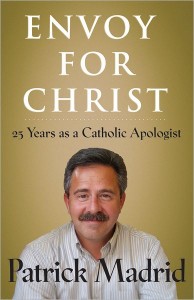 Over the past twenty-five years, Patrick Madrid has explained and defended the Catholic faith worldwide. Envoy for Christ is a fascinating look inside Catholic apologetics from Madrid s vantage point on the frontlines.
Over the past twenty-five years, Patrick Madrid has explained and defended the Catholic faith worldwide. Envoy for Christ is a fascinating look inside Catholic apologetics from Madrid s vantage point on the frontlines.
A collection of written material that spans the author’s career, Catholic thought is applied to a variety of apologetic issues, and in addition, Madrid will look at how he has applied Catholic truth to circumstances in his own life. With some of his earlier works, he will also explain how his thinking has changed and developed over the years. This is a summary of the legacy of Patrick Madrid’s far-reaching public ministry.
From Willow Creek to Sacred Heart: Rekindling My Love for Catholicism
by Chris Haw
Ave Maria Press, 256 pages, paperback
Released on October 8, 2012
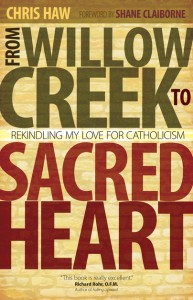 The bestselling coauthor of Jesus for President chronicles his spiritual journey through evangelical Christianity and his return to Catholicism. A respectful and engaging look at the megachurch movement and a heartfelt expression of love for the Catholic Church’s liturgy and its commitment to the poor.
The bestselling coauthor of Jesus for President chronicles his spiritual journey through evangelical Christianity and his return to Catholicism. A respectful and engaging look at the megachurch movement and a heartfelt expression of love for the Catholic Church’s liturgy and its commitment to the poor.
In the spirit of Merton’s Seven Storey Mountain and Dorothy Day’s The Long Loneliness, Chris Haw’s From Willow Creek to Sacred Heart recounts the journey of a young Christian seeking a personal relationship with Christ within the context of a faith community committed to love, justice, and solidarity with the poor.
Haw’s journey spans contemporary American Christianity—from a nominal Catholic background to megachurch Evangelicalism, to a new monastic community, and then back to Catholicism after an intense spiritual experience on Good Friday. Haw’s story and style will appeal to Catholics who champion the Church’s social teachings, those drawn to monastic practices and living in intentional community, and those seeking solidarity with the poor and marginalized.
“Much more than an already fascinating Chestertonian re-discovery of the Catholic Faith, Chris Haws bears witness to the slow, patient, ideology-busting determination of God. This has brought him, via the dying reefs of Belize and the apocalyptic landscape of Camden, New Jersey into one of our faith’s best-kept secrets: a deep, delighting love for our material, corporal, human life—in all its vulnerability.”
— James Alison, Author of Broken Hearts and New Creations
Choosing Joy: The Secret of Living a Fully Christian Life
by Dan Lord
Our Sunday Visitor, 144 pages, paperback
Released on October 17, 2012
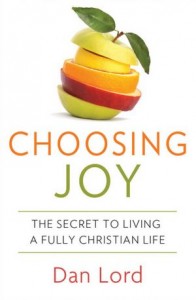 What is joy? Ask ten different people and you’ll get ten different answers.
What is joy? Ask ten different people and you’ll get ten different answers.
Yet if you asked:
— A man who grew up fatherless and destitute in the slums of Atlanta
— A young widow who decided to bring a neglected garden back to life in spite of agonizing physical pain and a deeply wounded spirit
— Or author Dan Lord himself, ex-frontman for a popular indie rock band
…each would point to the one source of their joy: Jesus.
They made the choice for joy, against all odds, and so can you, though the obstacles might seem insurmountable. Worry and anxiety, pain and suffering, the daily grind—all these and more can block your path. When faced with such challenges, is it possible to get past the barriers, let go, and experience God’s joy?
When you look around, you might wonder—although joy is a fruit of the Spirit, it doesn’t seem to be hanging visibly from many Christian boughs. Choosing Joy aims to change that-and change your life in the process-as it helps you discover the key to this most attractive but seemingly elusive gift.
Choosing Joy, will help you overcome the obstacles and focus your heart, mind and strength on God so that you can receive the happiness and peace that the world cannot give.
Radiate: More Stories of Daring Teen Saints
by Colleen Swaim
Liguori Publications, 144 pages, paperback
Released on November 1, 2012
 Radiate: More Stories of Daring Teen Saints will continue to set your heart on fire. Whether you are young or merely a youth at heart, you will be inspired by the heroism of these teenage saints. Young male and female teen saints from various places in the world are in this text; a total of ten stories in all.
Radiate: More Stories of Daring Teen Saints will continue to set your heart on fire. Whether you are young or merely a youth at heart, you will be inspired by the heroism of these teenage saints. Young male and female teen saints from various places in the world are in this text; a total of ten stories in all.
As you read these dynamic stories, remember that you too are called to life of joy and holiness. This sequel will continue to set your heart ablaze with vivid storytelling, saintly challenges, prayers, images, and more.
Saints in Radiate include: St. Marie-Bernarde Soubirous (Bernadette), St. Rose of Viterbo, St. Lucy, Blessed Laura Vicuna, St. Agnes of Rome, St. Aloysius Gonzaga, St. Peter Yu Tae-chol, Blessed Ceferino Namuncura, St. Louis Ibaraki, and the Japanese Martyrs.

